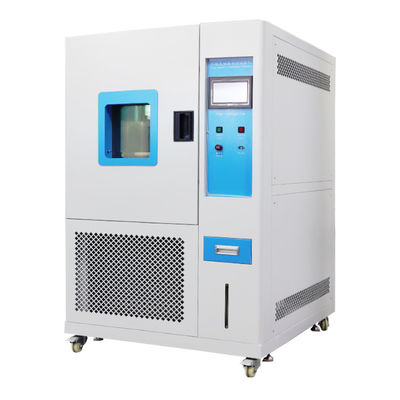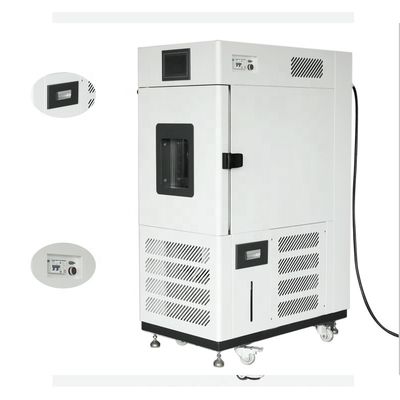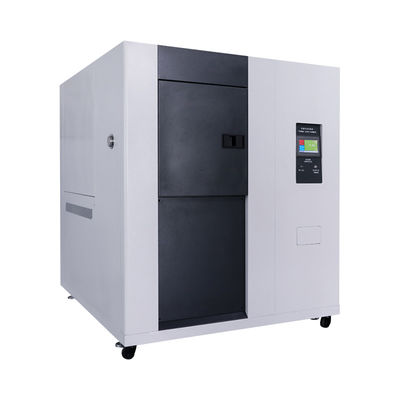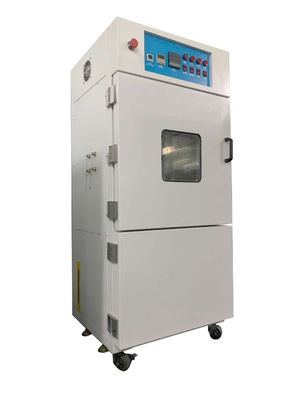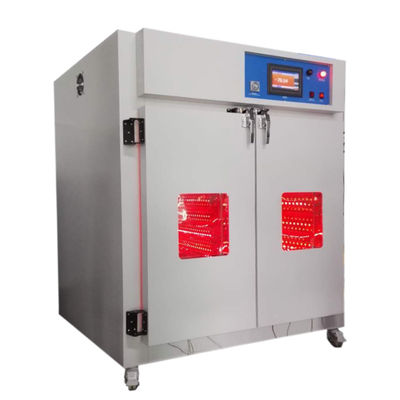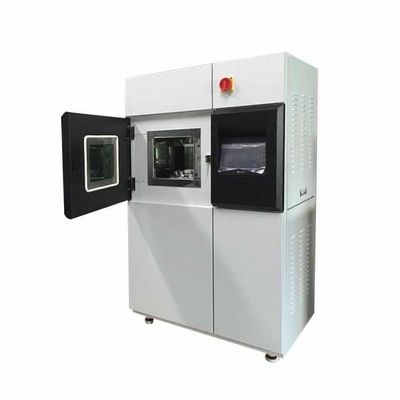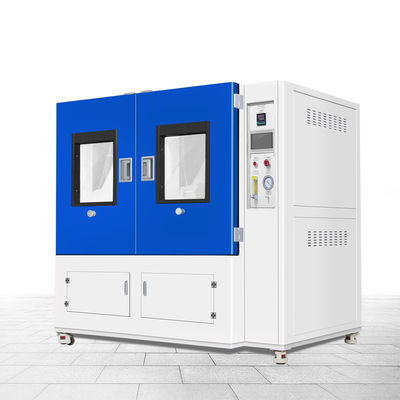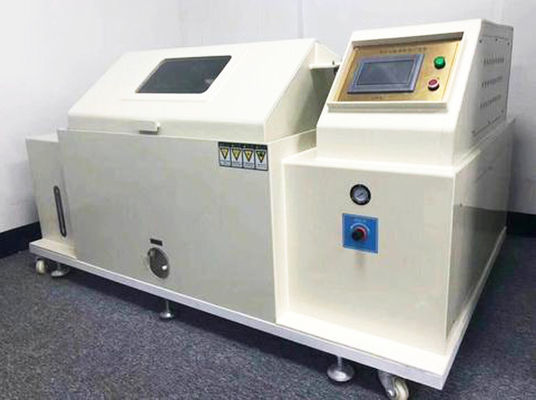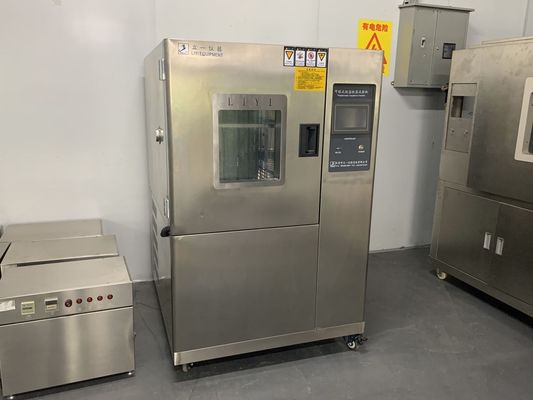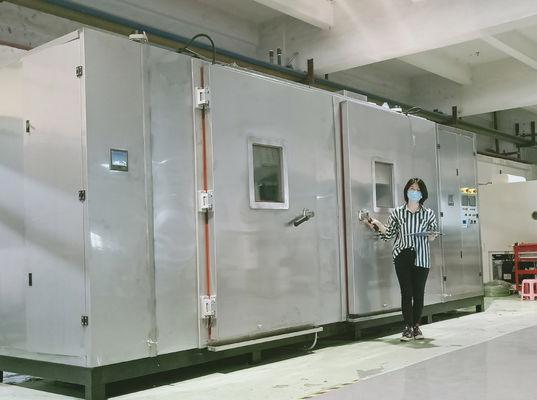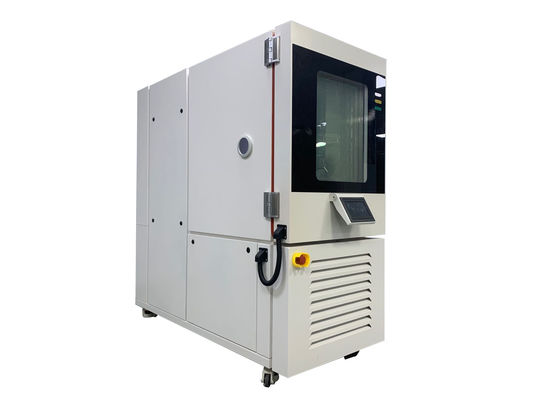Constant temperature and humidity test box, also known as constant temperature and humidity test machine, constant temperature and humidity test box, programmable humidity and heat alternating test box, constant temperature machine or constant temperature and humidity box, is used for testing the performance of materials in various environments. This material is heat-resistant, cold-resistant, dry-resistant and moisture-resistant. It is suitable for testing the quality of electronics, electrical appliances, mobile phones, communications, instruments, vehicles, plastic products, metals, food, chemicals, building materials, medical care, aerospace and other products.
Items prohibited for testing
1.explosive
1). Nitroglycerin (ethylene glycol dinitrate), nitroglycerin (glycerol trinitrate), nitrocellulose and other explosive nitrates.
2). Trinitrobenzene, trinitrotoluene, trinitrophenol (picric acid) and other explosive nitro compounds.
3). Peracetic acid, methyl ethyl ketone peroxide, benzoyl peroxide and other organic peroxides.
2.combustible
1). Spontaneous combustion: Metals: "lithium", "potassium", "sodium", yellow phosphorus, phosphorus sulfide, red phosphorus. Inorganic compounds: calcium carbide (calcium carbide), phosphide lime, magnesium powder, aluminum powder, sodium bisulfite.
2). Oxide properties:
(1) Potassium chlorate, sodium chlorate, ammonium chlorate and other chlorates.
(2) Potassium peroxoate, sodium peroxoate, ammonium peroxoate and other peroxyacid salts.
(3) Potassium peroxide, sodium peroxide, barium peroxide and other inorganic peroxides.
(4) Potassium nitrate, sodium nitrate and other nitrates.
(5) Potassium hypochlorite and other hypochlorites.
(6) Sodium chlorite and other chlorites.
3.Flammables
1) Diethyl ether, gasoline, acetaldehyde, propylene oxide, carbon disulfide and other substances whose ignition point is less than -30℃.
2) Ordinary ethane, ethylene oxide, acetone, benzene, methyl ethyl ketone and other substances whose ignition point is above -30℃ but less than 0℃.
3) Methanol, ethanol, dimethylbenzene, amyl acetate and other substances whose ignition point is above 0°C and lower than 30°C.
4) Kerosene, gasoline, turpentine, isoamyl alcohol, acid vinegar and other substances whose ignition point is above 30℃ and below 65℃.
selection principle
reproducibility
Complete and accurate reproduction of the environmental conditions that exist in nature in the laboratory is elusive. However, within a certain tolerance range, people can accurately and approximately simulate the external environmental conditions experienced by engineering products during use, storage, and transportation. The created environmental conditions (including the platform environment) surrounding the tested product should meet the requirements of the environmental conditions and their tolerances specified in the product test specification.” For example, the temperature box used for the test of military products should not only meet the high temperature and low temperature test values and test time specified in the national military standards GJB150.3-86 and GJB150.4-86 according to different types of products, but also meet the test values. Requirements for the uniformity of the temperature field and the accuracy of temperature control in the specification. Only in this way can the reproducibility of the environmental conditions in the environmental test be guaranteed.
repeatability
An environmental test equipment may be used for multiple tests of the same type of product, and a tested engineering product may also be tested in different environmental test equipment. The comparability of the test results obtained under the conditions necessarily requires the environmental conditions provided by the environmental test equipment to be repeatable. That is to say, the stress level (such as thermal stress, vibration stress, electrical stress, etc.) applied by the environmental test equipment to the tested product is consistent with the requirements of the same test specification.
The repeatability of the environmental conditions provided by the environmental test equipment is guaranteed by the national metrological verification department after passing the verification according to the verification regulations formulated by the national technical supervision agency. For this reason, the environmental test equipment must be required to meet the requirements of various technical indicators and accuracy indicators in the verification regulations, and the use time does not exceed the time limit specified in the verification cycle. If a very common electric vibrating table is used, in addition to satisfying technical indicators such as excitation force, frequency range, load capacity, etc., it must also meet the requirements of accuracy indicators such as lateral vibration ratio, table acceleration uniformity, harmonic distortion, etc. specified in the verification regulations. , and the use cycle after each verification is two years, and it must be re-certified after two years before it can be put into use.
measurability
The environmental conditions provided by any environmental test equipment must be observable and controllable, not only to limit the environmental parameters within a certain tolerance range to ensure the reproducibility and repeatability of the test conditions, but also It is also necessary to proceed from the safety of product testing, in order to prevent damage to the tested product due to uncontrolled environmental conditions, resulting in unnecessary losses. Various test specifications generally require that the accuracy of parameter testing should not be less than one-third of the allowable error of the test conditions.
exclusivity
Each environmental or reliability test carried out has strict regulations on the types, magnitudes and tolerances of environmental factors, and excludes environmental factors that are not required for the test to penetrate into it, so as to judge and analyze the product during or after the test. In the case of failure and failure mode, the exact basis is provided, so the environmental test equipment is required to provide the specified environmental conditions, and it is not allowed to add other environmental stress interference to the tested product. For example, the table surface leakage, acceleration signal-to-noise ratio, and the total root mean square value ratio of the acceleration in and out of the band as defined in the verification regulations of the electric vibrating table. Accuracy indicators such as random signal inspection and harmonic distortion are all verification items formulated to ensure the uniqueness of environmental test conditions.
Safety and reliability
Environmental tests, especially reliability tests, have a long test period, and the test objects are sometimes high-value military products. During the test process, the test personnel often need to operate or test around the site, so the environmental test equipment must have the ability to operate. Safety, convenient operation, reliable use, long working life, etc., to ensure the normal operation of the test itself. Various protection, alarm measures and safety interlocking devices of the test equipment should be perfect and reliable to ensure the safety and reliability of the test personnel, the tested product and the test equipment itself.
Humidification and dehumidification
There are many ways to express humidity. As far as test equipment is concerned, the concept of relative humidity is usually used to describe humidity. Relative humidity is defined as the ratio of the partial pressure of water vapor in the air to the saturated vapor pressure of water at that temperature and expressed as a percentage. From the nature of water vapor saturation pressure, it can be seen that the saturation pressure of water vapor is only a function of temperature, and has nothing to do with the air pressure where water vapor can be placed. It should be the Goffgrid formula that is widely used in the measurement. It is used by the meteorological department to compile the humidity look-up table.
The process of humidification is actually to increase the partial pressure of water vapor. The initial humidification method is to spray water on the wall of the test chamber, and the saturation pressure of the water surface can be controlled by controlling the water temperature. The water on the surface of the box wall forms a larger surface, on which water vapor pressure is added to the box by diffusion to increase the relative humidity in the test box. This method appeared in the 1950s. Since the control of humidity at that time was mainly the simple switch value adjustment of the mercury-electric contact-type conductive meter, the control adaptability to the water temperature of the hot water tank with a large lag was poor, so the transition process of the control was long, which could not satisfy the alternating damp heat. There is a need for more humidification requirements, and more importantly, when spraying the wall of the box, it is inevitable that water droplets will fall on the test product to cause different degrees of pollution to the test product. At the same time, there are certain requirements for the drainage in the box. This method was quickly replaced by steam humidification and shallow water pan humidification. But this approach still has some advantages. Although its control transition process is long, the humidity fluctuation is small after the system is stabilized, and it is more suitable for constant damp heat test. In addition, the water vapor does not overheat during the humidification process and does not add additional heat to the system. Also, when the spray water temperature is controlled to be lower than the point temperature required by the test, the spray water has a dehumidifying effect.
With the development of damp heat test from constant damp heat to alternating damp heat, a faster humidification reaction capability is required. When spray humidification can no longer meet the requirements, steam humidification and shallow water tray humidification methods have been widely adopted and developed.
Installation site
In order to facilitate the cooling and maintenance of the box, the place where the device is installed must meet the following conditions:
1. The distance from the adjacent wall or utensils is 300mm.
2. In order to stably exert the function and performance of the test box, a place with an annual temperature of 15~35°C and a relative humidity of more than 85% should be selected.
3. The ambient temperature of the installation site should not change rapidly.
4. It should be installed on a level surface (use a spirit level to confirm the level on the ground during installation).
5. It should be installed in a place without direct sunlight.
6. It should be installed in a well-ventilated place.
7. It should be installed in a place away from combustibles, explosives and high temperature heat sources.
8. It should be installed in a place with less dust.
9. Install it as close to the power supply as possible.
Precautions
1. In order to avoid machine failure of the constant temperature and humidity test box, please provide a power supply within the rated voltage range.
2. In order to prevent electric shock or malfunction and failure, please do not turn on the power until the installation and wiring are completed.
3. This product is a non-explosion-proof product, please do not use the constant temperature and humidity machine in the environment with flammable or explosive gas.
4. Please try not to open the door of the test chamber during the operation of the instrument. Opening it at high temperature may cause burns to the operator, and opening it at low temperature may cause frostbite to the staff, and may cause the evaporator to freeze, affecting the cooling effect. If it must be opened, please do some protective work.
5. It is forbidden to disassemble, process, modify or repair the constant temperature and humidity machine without authorization, otherwise there will be the danger of abnormal action, electric shock or fire.
6. The ventilation holes of the body should be kept unobstructed to avoid malfunction, abnormal movement, reduction of life and fire.
7. If the machine is damaged or deformed when unpacking, please do not use it.
8. When installing the machine, be careful not to let dust, wire ends, iron filings or other things enter, otherwise wrong actions or failures will occur.
9. The wiring must be correct and must be grounded. Not grounding may cause electric shock, wrong action accident, abnormal display or large measurement error.
10. Regularly check the terminal screws and fixing brackets, please do not use them when they are loose.
11. During the operation of the instrument, the power input terminal cover must be installed on the terminal board to prevent electric shock.
12. During the operation of the instrument, before modifying the settings, signal output, starting, stopping, etc., the safety should be fully considered, and the wrong operation will damage or malfunction the working equipment.
13. Please use a dry cloth to wipe the meter, do not use alcohol, gasoline or other organic solvents, do not splash water on the meter, if the meter is immersed in water, please stop using it immediately, otherwise there is a danger of electric leakage, electric shock or fire.
14. The internal parts of the instrument have a certain life span. In order to use the instrument continuously and safely, please maintain and maintain it regularly. When scrapping this product, please dispose of it as industrial waste.
Maintenance method
The constant temperature and humidity test box has been widely used in the electronics industry, national defense technology, chemical industry, machinery manufacturing, aerospace and other fields, so how to maintain, clean and maintain the constant temperature and humidity test box in daily work?
(1) The internal impurities of the constant temperature and humidity test box should be removed before operation.
(2) The power distribution room is cleaned at least once a year.
Above, you can use a vacuum cleaner to absorb the indoor dust when cleaning.
(3) The exterior of the box must be cleaned more than once a year, and it can be wiped with soapy water before cleaning.
2. Inspection and maintenance of the humidifier in the constant temperature and humidity test chamber The water storage in the humidifier should be replaced once a month to ensure the water quality is clean, and the humidification water tray should be cleaned once a month to ensure smooth water flow.
3. Constant temperature and humidity test box check over-temperature protector When the constant temperature and humidity test box is running, the set maximum value of over-temperature protection should be increased by 20℃~30℃. When the temperature in the test chamber rises to the set point of the over-temperature protection, the power supply of the heater will stop, and the "OVERHEAT" over-temperature warning light will be on, but the fan will still run. Whether the over-temperature protector is set properly [the setting of the wet bulb over-temperature protector is 120℃].
4. Removal of dust from the condenser of the constant temperature and humidity test box The condenser should be maintained regularly and monthly. Use a vacuum cleaner to absorb the dust attached to the cooling mesh of the condenser or use high-pressure air to spray the dust.
5. The replacement of the wet bulb test cloth in the constant temperature and humidity test box When the surface of the test cloth is not clean or hardened, or after the temperature control is completed, the test cloth must be replaced before continuing to do the temperature and humidity control. The test cloth should be replaced about once every three months. When replacing, the temperature measuring body should be wiped with a clean cloth. When replacing a new test cloth, it should be cleaned first.
6. Check and adjust the water level of the wet bulb in the constant temperature and humidity test chamber. The water level in the water tank should not be too high, so that the water overflows the water tank or is too low, so that the wet bulb test cloth absorbs water abnormally, which affects the accuracy of the wet bulb. Full points. The adjustment of the water level of the water tank can adjust the height of the water tank.
7. If the constant temperature and humidity test chamber is not used for a long time, the equipment should be energized regularly every month, and the energization time should not be less than 1 hour.

 Your message must be between 20-3,000 characters!
Your message must be between 20-3,000 characters! Please check your E-mail!
Please check your E-mail!  Your message must be between 20-3,000 characters!
Your message must be between 20-3,000 characters! Please check your E-mail!
Please check your E-mail! 
